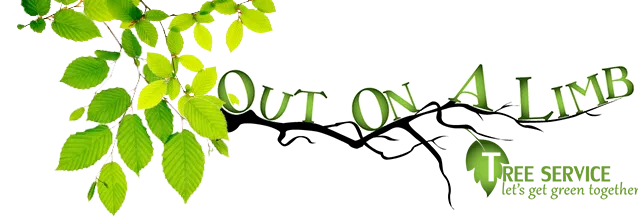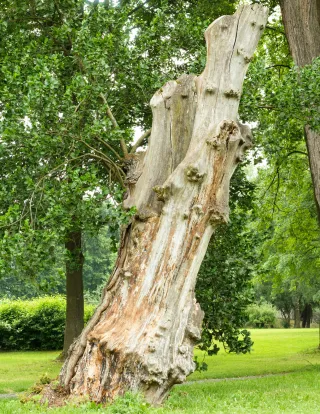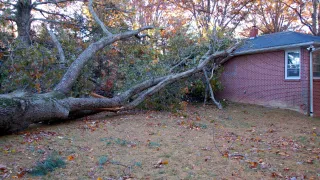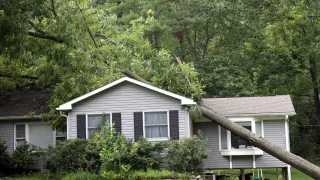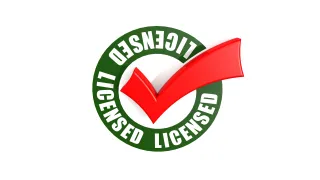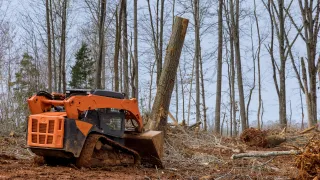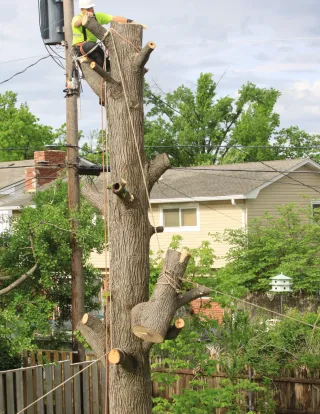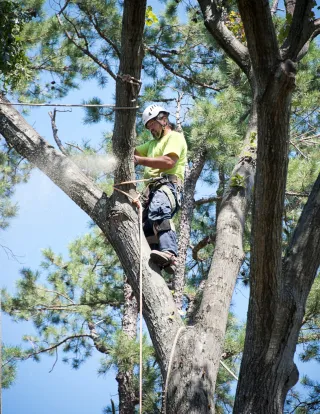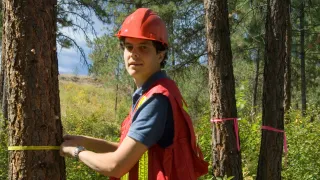
Common Tree Pests in Chattanooga (And How to Spot Them Early)
As Chattanooga rolls into late spring and early summer, trees are waking up — and so are the pests that can damage them.
Many insects are a normal part of a healthy ecosystem. But when certain pests go unchecked, they can weaken, stress, or even kill otherwise healthy trees. And the tricky part? By the time you notice serious symptoms, the damage may already be done.
That’s why now is the perfect time to learn what to look for — and take simple, preventative steps before the heat of summer causes infestations to spike.
Here are a few common tree pests we see in the Chattanooga and North Georgia region — and how to catch them early while you still have options.
1. Emerald Ash Borer (EAB)
What it is:
An invasive beetle that specifically targets ash trees, the emerald ash borer is one of the most destructive tree pests in the U.S. Once inside, its larvae feed under the bark, cutting off the tree’s ability to move water and nutrients.
What to look for:
Thinning or dead branches near the top of the tree
Vertical splits or cracks in the bark
D-shaped holes about the size of a grain of rice
Increased woodpecker activity (they love EAB larvae)
What to do:
If you have an ash tree, don’t wait. Have it inspected now. Preventive treatment is most effective before you see symptoms.
2. Bagworms
What it is:
Bagworms are caterpillars that build protective cases out of silk and tree material. They can defoliate entire sections of trees — especially evergreens like cedar, spruce, and juniper.
What to look for:
Hanging “bags” that look like small pinecones
Yellowing or browning of needle tips
Sparse or bare patches in the canopy
What to do:
Early in the season, you can physically remove the bags before the worms emerge. For larger trees or infestations, targeted treatment may be needed — timing is key.
3. Aphids
What it is:
Tiny sap-sucking insects that feed on a wide range of tree species. While small, their numbers can grow quickly and stress young or already vulnerable trees.
What to look for:
Sticky residue (called honeydew) on leaves or beneath the tree
Curled or distorted leaves
Ants climbing up and down the trunk (they farm aphids for the honeydew)
What to do:
A strong spray of water can remove small infestations. Natural predators like ladybugs help keep aphids in check. For recurring issues, horticultural oils or insecticidal soaps may be useful.
4. Scale Insects
What it is:
Scale insects attach to bark, branches, and leaves, sucking out sap and leaving behind stress. There are many types — some look like little bumps, others like white fuzz.
What to look for:
Bumpy or crusty growths on branches
Yellowing leaves or stunted growth
Sticky honeydew or black sooty mold
What to do:
Like aphids, scales often go unnoticed until a lot of damage is done. Late spring is a good time for dormant oil sprays or systemic treatments — but always follow best practices for timing and tree type.
5. Borers (General)
What it is:
Borers are beetles that lay eggs on trees; their larvae tunnel into the wood, weakening structural integrity. While EAB is one type, there are many borers that affect local trees.
What to look for:
Sawdust-like material (called frass) at the base of the tree or on bark
Small round or oval holes in the trunk or branches
Sudden dieback or weakened limbs
What to do:
Healthy trees are more resilient. Avoid wounding bark and keep trees well-watered during drought. For trees already showing signs of infestation, a professional assessment is critical.
Preventive Tips for Late Spring
Here’s how you can stay ahead of pests — before summer turns small problems into big ones:
Inspect regularly: Walk your yard every few weeks and look for subtle changes.
Water wisely: Drought-stressed trees are more susceptible to pests.
Avoid over-fertilizing: Too much nitrogen can encourage soft, pest-prone growth.
Prune dead or overcrowded limbs: This improves airflow and reduces hiding spots.
Call in backup early: If you’re not sure what you’re seeing, get a second opinion.
Final Thoughts
You don’t need to memorize every pest — but noticing something “off” early can make all the difference. When it comes to tree health, prevention is always easier (and cheaper) than treatment or removal.
📞 If something looks suspicious — or if you just want a trained eye on your yard — call or text us at (423) 443-4533. We’re here to help you keep your trees healthy, strong, and pest-free.
